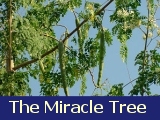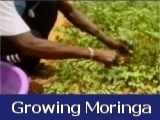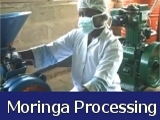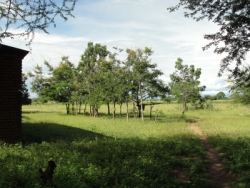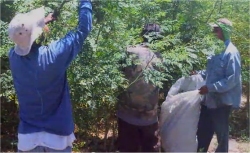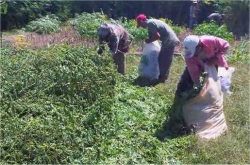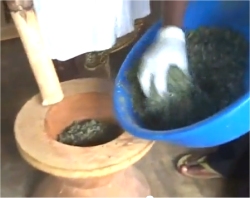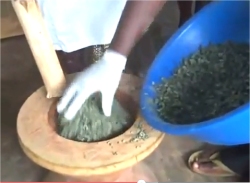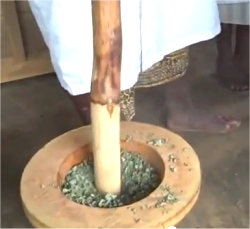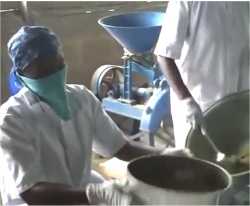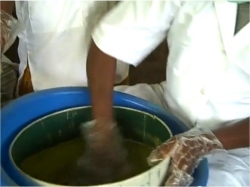United Caribbean
Moringa
Drop of Hope School Project
Ecological Reforestation Moringa Agro Glamping
|
|
home>> moringa
miracle tree>>moringa procession
Moringa the Miracle Tree - processing
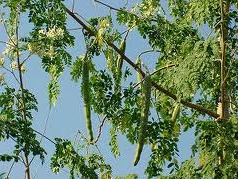 |
Moringa is one the greatest gifts which
Nature bestowed on man - this was known to the ancient world
and they regarded the tree as a “Cure-all Tree”.
They also saw the Moringa tree as an “Elixir of long
life”, “the Tree of Immortality”, “the
Tree of Life”, “the Never Die Tree”, “the
Miracle Tree" and “Mother’s best friend”.
Other common names for Moringa are Drumstick tree (referring
to the large drumstick shaped pods) Horse-radish tree, Benolive
tree (referring to the oil that can be squeezed out of the
seeds)
|
UCT is looking to establish
three small Moringa Processing plants in Malawi, Tanzania
and Uganda before we embark on our major commercial project in Kenya.
|
|
|
STEP 1- Harvesting:
Moringa can be grown intensively with no irrigation
and small amounts of fertilizer. Harvesting the leaves every
75 days—four crops in a year with around 100 tons of
green matter per hectare the first year, and 57 tons per hectare
the second year.
If however the Moringa plantation is irrigated
and fertilized harvesting can be achieved every 35 days—nine
crops per year—with a total yield of 650 tons of green
matter per hectare. This yield can be consistent from the
same plants for seven years.
|
|
|
|

|
|


 |
-
The Moringa leaves are
transported to the Processing Plant where they are first
washed in large buckets or pots in well or catchment water.
- The second wash is done using BioSand filtered water.
This particular type of filter is an adaptation of the traditional slow sand filter, which has been used for community water treatment for almost 200 years. The BSF is smaller and adapted for intermittent use, making it most suitable for households, typically around five people. The filter body, or the outside of the filter (also known as the filter container), is commonly made of concrete.
Photographes compliments of Shape
Lives Foundation
|
Step 3 - Picking:
Hats, masks, gloves and over coats are worn
to comply with good food hygeine standards.
The washed Moringa leaves are then removed
from the twigs. (These can be chopped into 10cm pieces and
fed to cattle, sheep or goats)
Once removed the leaves are collected and
placed in a large bowl.
Photographs compliments of Shape
Lives Foundation |
|
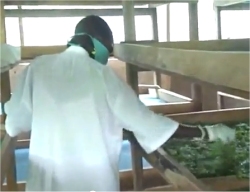
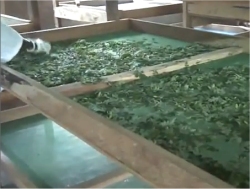
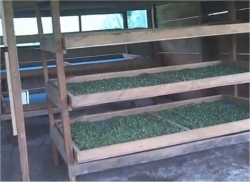 |
Step 4 - Drying:
The leaves are now placed in the drying
trays in the shade for 2 - 3 days.
The leaves are shifted around a few times
per day to ensure a circulation of air.
The drying area must be rodent free.
Photographs compliments of Shape
Lives Foundation
|
Step 5 - Pounding:
While hand grinding is still widely used it
is slow, time and labor intensive and often produces an inconsistent
Moringa leaf powder.
It is still used however at the stage before
grinding.
Photographs compliments of Shape
Lives Foundation |
|

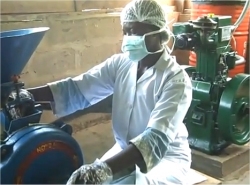

|
Step 6 - Grinding:
A flour grinding mill can be
used attached to a small engine to work the machine.
Photographs compliments of Shape
Lives Foundation
|



|
Step 8- Weighing and packaging:
Photographs compliments of Shape
Lives Foundation
The estimated cost of establishing
this program is around US $15,000.
|
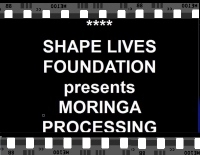 |
This is the latest video from Shape
Lives Moringa Farm showing all the various stages of processing
Moringa and the processing methods. This various video shows
the experience gained in processing Moringa for the past
years and adopting the best hygiene practices to ensure
quality.
CLICK
to view
|
SOWING SEEDS OF SUCCESS - MORINGA CURRICULUM
|
|
|

